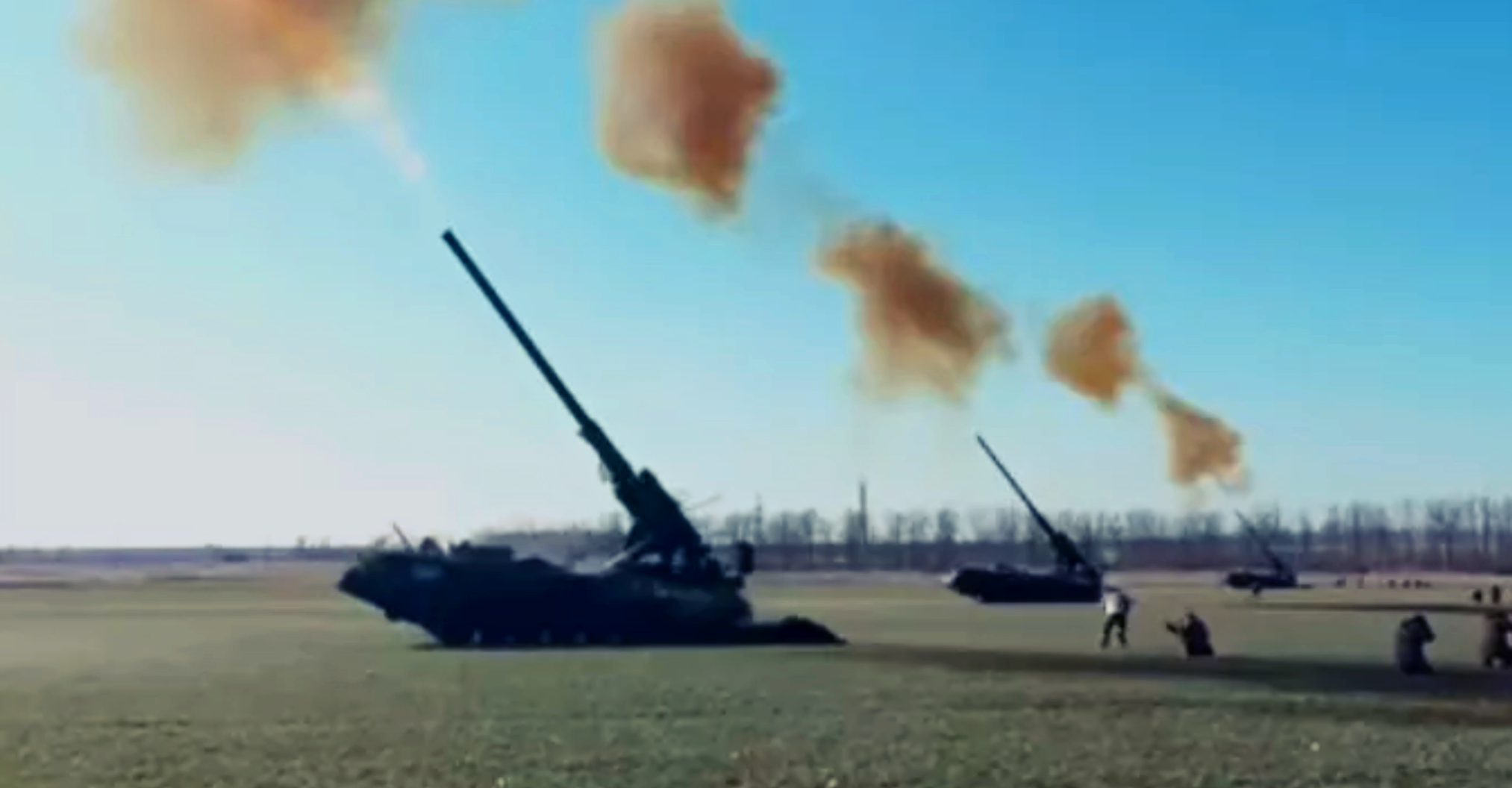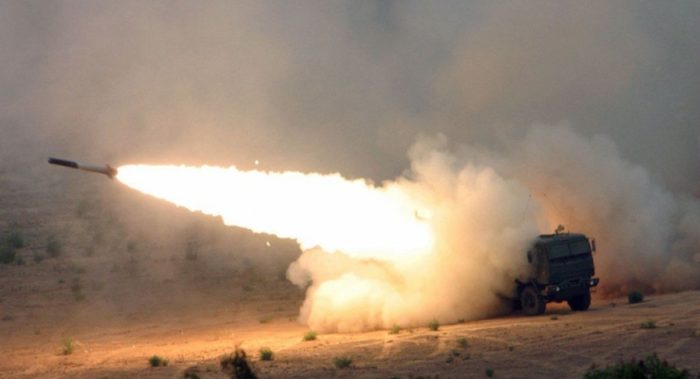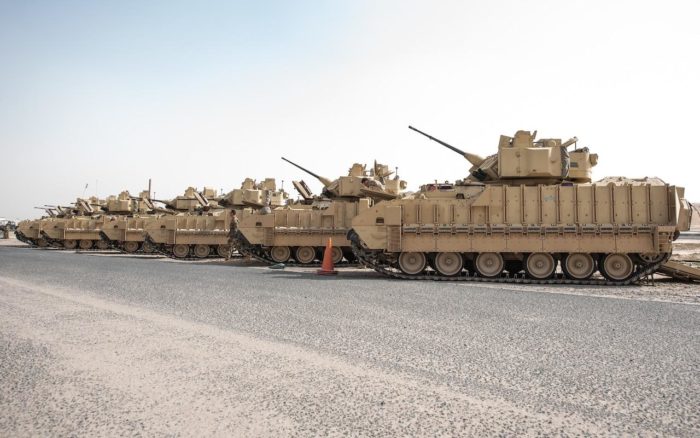The war, Europe's bloodiest since WWII, is burning through tanks, artillery, and armored vehicles faster than the Russian military industry can replace them. By 2026, military experts predict, these critical shortages will force Moscow to either end the war or fundamentally reimagine how to wage it.
An investigation by The Insider reveals the scale of this military erosion, documenting how Soviet military power—once thought inexhaustible—now faces a countdown to depletion.
The shocking scope of military equipment losses
Since the start of the invasion, the military tracking project Oryx has documented stark disparities in hardware losses:
Among completely destroyed equipment, Russia has lost 2,600 tanks, 1,900 APCs, and 4,100 infantry fighting vehicles, while Ukraine's losses stand at 700, 800, and 900, respectively. Artillery losses show similar patterns, with Russia losing nearly 2,000 systems. About half of Russia's lost equipment comes from Soviet-era stockpiles.
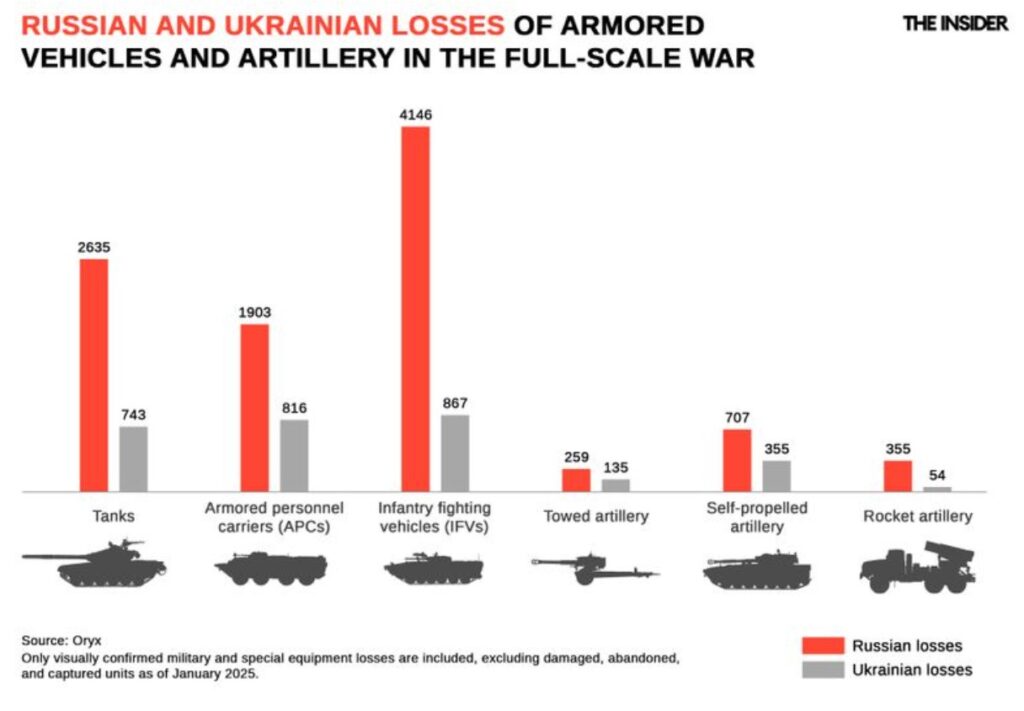
Other databases like WarSpotting and LostArmour report similar trends, though methodological challenges exist. These include potential duplicate counts of repaired vehicles and unverified losses without visual evidence.
Recent combat data reveals evolving patterns. During Ukraine's 2024 Kursk offensive, forces lost approximately 10 tanks and 35 armored vehicles monthly. In contrast, Russia's ongoing Pokrovsk offensive shows monthly losses of 40 tanks and over 80 armored vehicles.
Why Russia can't keep up with its equipment losses
Russia faces mounting challenges in replacing its battlefield losses, with current production woefully inadequate for the war's demands. The numbers tell a stark story:
Among infantry fighting vehicles, the BMP-3 is the only Russian IFV still in mass production, while the modern BTR-82 APC line manages just 300-400 units annually, including modernized older models.
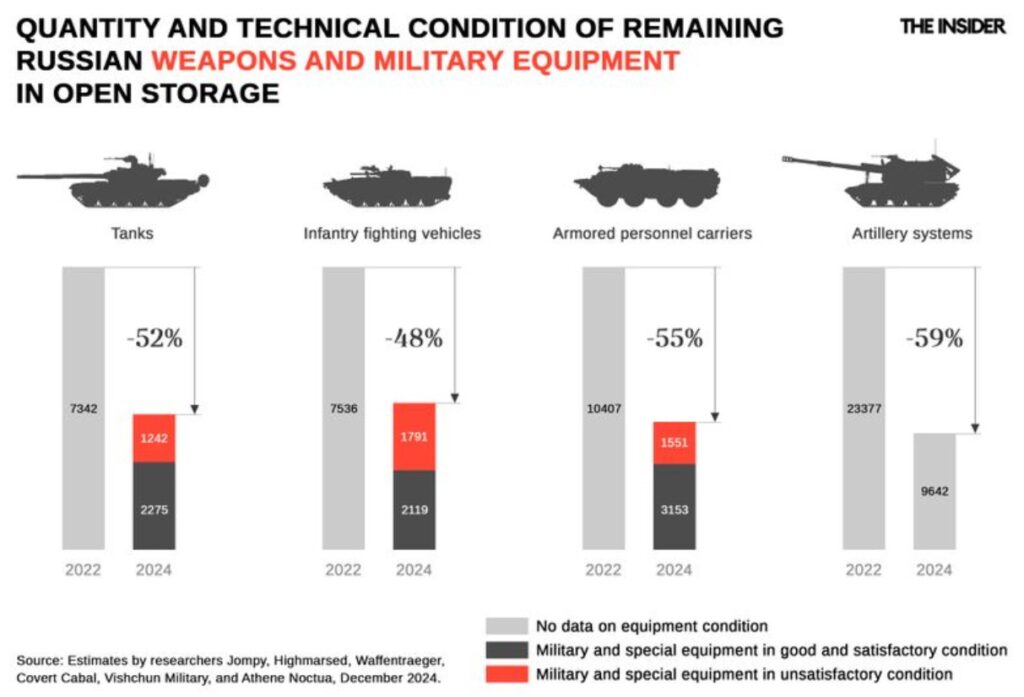
The situation with Soviet-era stockpiles, long Russia's strategic reserve, is equally dire. Satellite imagery from late 2024 reveals just 41-52% of pre-war reserves remain, most in poor condition.
Many remaining tanks are obsolete T-62s, while some vehicle categories, like the MT-LB, are completely depleted.
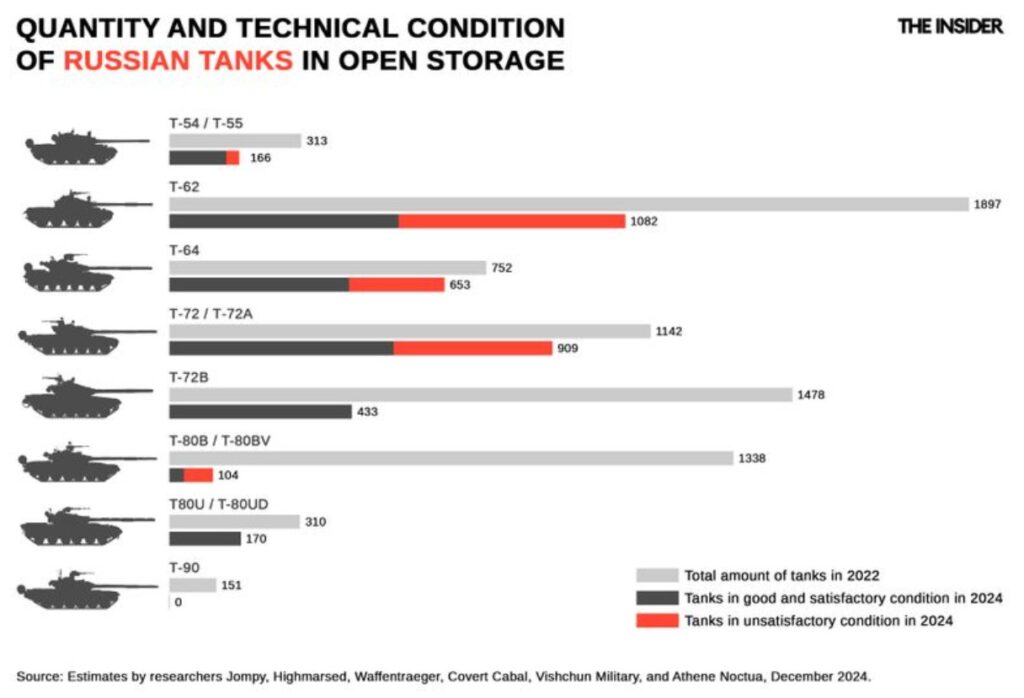
Production faces critical bottlenecks, particularly in artillery manufacturing, where barrel production has become a key constraint. Military analyst Andriy Tarasenko warns Russia's repairable equipment reserves could be exhausted within 12-18 months unless production increases to 700-1,000 armored vehicles annually - a target the current industrial base cannot meet.
"Replacing losses with newly built vehicles is impossible without unconventional solutions, such as purchasing old equipment from countries like India or launching an unprecedented 'new industrialization,'" he explains.
The problem extends beyond production numbers to repair capacity. Russia's armored repair facilities struggle with technological limitations and poor quality control. The situation is so dire that two to three decommissioned vehicles must often be cannibalized to restore a single operational unit. Throughout the war, the Kremlin has effectively been fighting "on credit," as equipment deliveries have never matched battlefield losses.
Trending Now
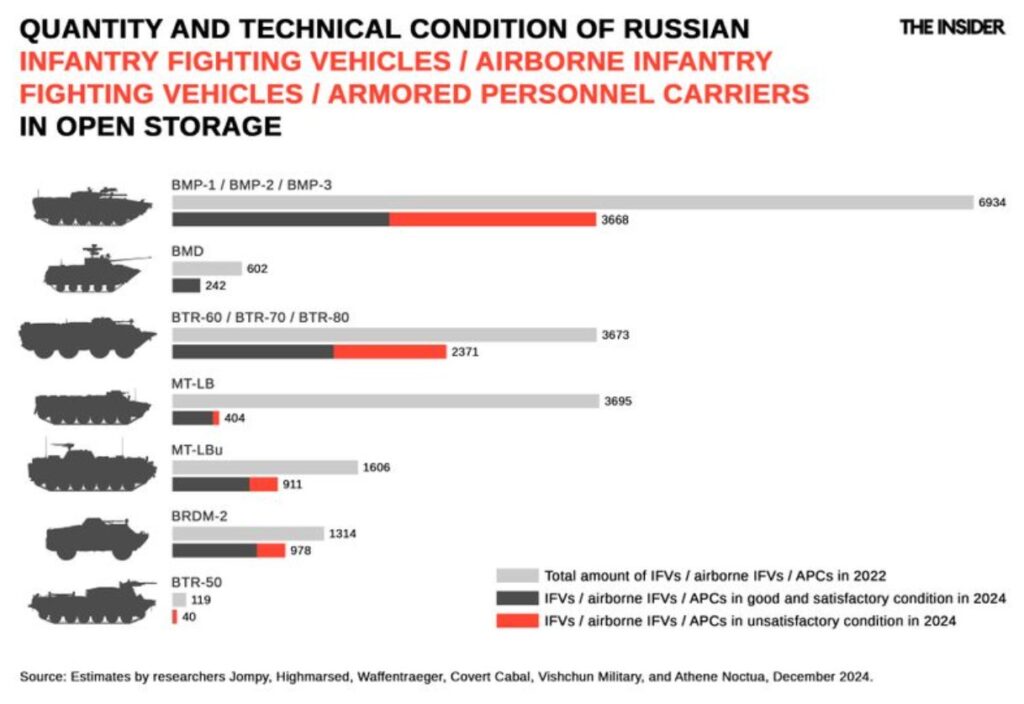
Ukraine has developed a more resilient approach, combining captured Russian equipment, Western military aid, and Soviet-era vehicles from allied nations. Initially benefiting from abandoned Russian hardware, Kyiv now relies primarily on Western support and domestic production.
The equipment crisis is forcing new strategies on both sides
Equipment scarcity has forced both sides to adapt their combat strategies dramatically. Ukraine maintains a largely defensive posture, limiting its use of scarce tanks and IFVs even during offensive operations like the Kursk campaign.
Russia's adaptations have been more extreme. With conventional armor in short supply, Russian forces have resorted to converting rear-area MT-LB vehicles into improvised combat platforms and deploying unorthodox transportation, including motorcycles, ATVs, and civilian vehicles. Some vehicles are modified into explosive-laden "Shahed-mobiles."
The equipment deficit has fundamentally altered traditional military doctrine. Neither side now maintains fully operational motorized rifle or tank divisions, and Russia's recent offensive operations have been reduced to small infantry groups advancing on foot. Since the fall of 2023, these limitations have prevented any significant territorial gains.
What’s next for Russia's war in Ukraine?
Armored vehicles and artillery scarcity are dramatically slowing territorial advances on both sides. While drones and loitering munitions have transformed warfare, they cannot replace traditional artillery support needed for effective offensive operations.
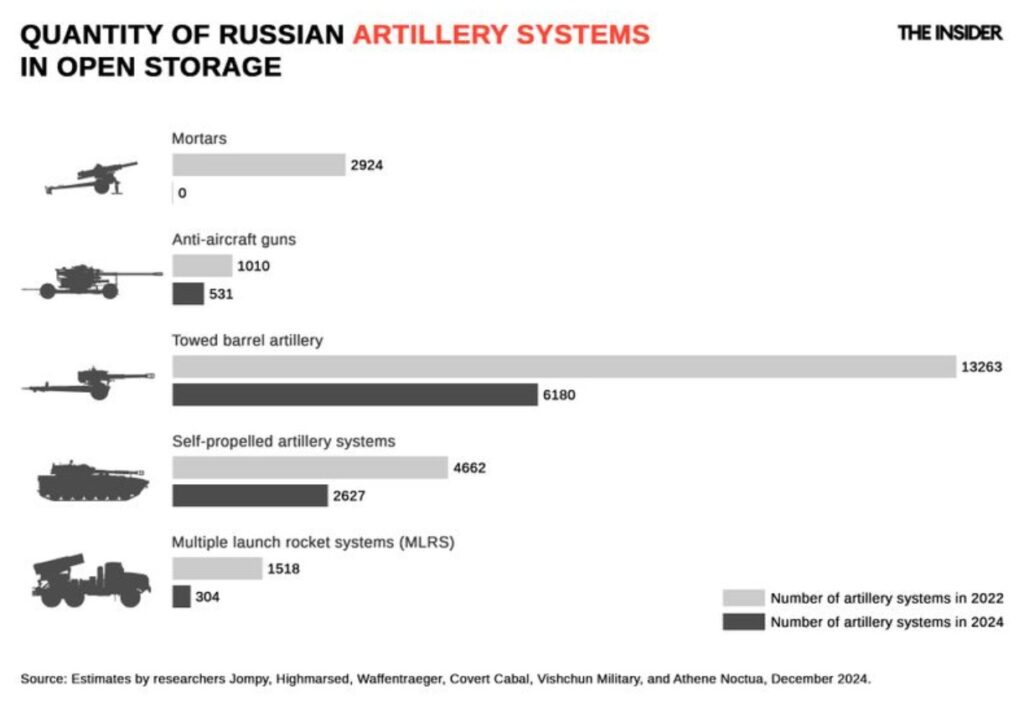
Military experts outline two potential adaptations for Russia. Pavel Luzin of the Fletcher School suggests Moscow might adopt Hamas-style guerrilla tactics or shift to producing simpler combat systems. However, ECFR analyst Gustav Gressel notes Russia's effective tactical adjustments.
"As Russia increasingly has problems fielding enough workable gun-artillery, they increasingly rely on air-launched glide bombs for fire support. We also see Russians substituting APCs with quads, ATVs, motorcycles," he said.
Russia's potential lifeline could come from authoritarian allies. Following Kim Jong Un's September 2023 visit, North Korea has already begun supplying Moscow with artillery and air defense systems, while China, Iran, and Belarus remain potential sources of military hardware.
The long-term implications are severe. Russia's depleting arsenal will increasingly restrict its offensive capabilities while rebuilding its military to Cold War levels would require decades of massive investment. The key question becomes whether Ukraine's resistance and Western support can outlast Russia's remaining offensive potential.
Read more:
- Pyongyang sent 200 long-range artillery pieces to Russia, Seoul says
- Bloomberg: Putin’s strength in Ukraine may be an illusion as Russia’s corporate debt hits $ 446 billion
- ISW: Russian economy shows distress signs despite Kremlin’s strong-year-for-economy claims
- Zelenskyy compares Russian economy to sinking Titanic
- Putin must end Ukraine war by 2025 or face economic collapse, warns ex-energy chief
- Why Russia’s collapse is inevitable — and what comes next


